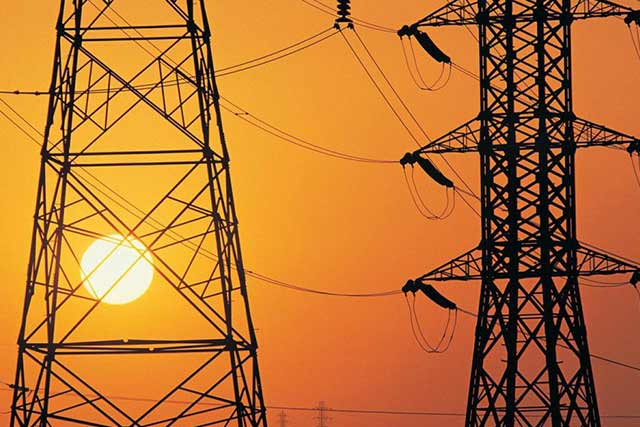The weakest link in India’s power sector reforms is distribution, which consists of distribution companies (Discoms) that are responsible for the supply of power to the consumers — industry, commercial, agriculture, domestic, etc. For successive Power Ministers, the financial health of Discoms has been a challenge and the incumbent, RK Singh’s situation is no different.
The Power Minister has not shied away from highlighting the disconnect in the structures of the power system — between decision-making by State governments and the financial consequences thereof, which are borne by the Discoms, leading to losses. The Minister has time and again emphasised the need for State governments to also shoulder responsibility for the financial health of their fully-owned Discoms.
Standard Bidding Document
Singh, a bureaucrat-turned-politician, decided to use his administrative skills here and his team came out with a proposal for Standard Bidding Document (SBD) in September that can be referred to during privatisation of power distribution business in States and Union Territories.
But the provisions relating to distribution franchisee already exist in the Electricity Act and are being successfully used by Discoms to improve performance and enhance efficiencies. These are enabling provisions for use by Discoms/States which want to give out some areas to franchisees/sub-licensees. It has been ensured that the distribution sub-licensee remains under regulatory control and jurisdiction to protect the interests of consumers.
So, when the private sector is already active in this sector, why are we doing this? Is the Centre encroaching into States’ territory? The main issue is the cost of power procurement. Shouldn’t this be corrected first?
Does this mean that the government thinks the private sector is more efficient than State-run entities? For the inefficiencies of five-six State-run Discoms that are defaulting, should the government come out with a proposal, which may lead to efficiently-run Discoms going under the hammer?
Critics would call it an unfair comparison as private players that are operational today are in urban centres such as Delhi, Mumbai, Ahmedabad and Kolkata. While the concept of private utilities has worked in urban centres, what needs to be seen is their success in rural centres, which will definitely not be easy. Their real acumen and efficiency can be tested if they perform at more under-developed geographies of the country.
Is the latest proposal a move to correct the balance-sheet of the defaulting entities? What about the mode of ownership — who will decide? Ideally, it should be left to the State government to determine the type and mode of ownership change they want to adopt if privatisation is considered by them.
According to the Power Ministry, the SBD document is for guidance of distribution utilities which wish to undertake privatisation. They can suitably modify the mechanism depending upon the need. It is not mandatory. Critics fear that the proposed mode of privatisation has limited accountability for cost efficiency and could result in the creation of monopolies.
According to the proposed document, significant loss-making Discoms with medium to high Aggregate Technical and Commercial (AT&C) losses of above 15 per cent may be bid out on AT&C loss reduction commitment for the first five years. The fixed parameter will be the consideration for sale of equity shares in the successor entity.
In the case of Discoms with lower than 15 per cent AT&C losses or negligible ACS-ARR (Average Cost of Supply-Average Revenue Realised) gap, it proposes that the bid parameter may be upfront premium for equity consideration in the utility. It further stipulates that a fixed AT&C loss trajectory for next five years may be specified in the request for proposals which shall be adopted for tariff determination.
As regards Power Purchase Agreements of existing distribution licensees, it proposes that the same shall be transferred to the successor entities. “Only in specific cases where there is a significant gap between Average Revenue Realised and Average Cost of Supply, PPAs may be retained in a State or Union Territory (UT) Government entity to structure a subsidised bulk power purchase cost for the successor entity for making it an independently financially viable entity, for a specified period,” it said.
The SBD further stipulates that the successor entity shall be provided with a clean balance sheet free of accumulated losses or unserviceable liabilities and wherever required, the State/UT Government concerned may provide suitable transition support to the successor entity for a specified period of, say, five or seven years.
In its comments to the Ministry of Power on the proposal, the Association of Power Producers (APP) has suggested that the request for proposal (RFP) and other bidding documents may be duly approved by the appropriate State Electricity Regulatory Commissions (SERCs) prior to the initiation of the bidding process. This will provide confidence to the bidders in terms of regulatory acceptance of the various RFP provisions.
Issue of employees
As regards employees of the existing distribution licensee, the APP has said that the bidders be given an option to decide on the number of employees to be taken over along with the SPV (special purpose vehicle). Transfer of all employees to the successor entity could be a huge liability to the incoming investor, especially when these projects are being awarded through competitive bids, the APP argues.
According to the SBD, the employees shall be transferred to the successor entity at continued or better service conditions. Further, the State/UT concerned shall be responsible for all terminal liability.
While the Centre’s efforts are worth acknowledging, how much financial transparency will this bring is anybody’s guess. An ideal policy framework will be that which protects consumer interest, encourages efficiency and increases accountability.
It is time that utilities are held accountable for their performance. Discoms should not end up working as monopolies. While efficiency should be incentivised, competition should lead to consumers having access to power at reasonable tariff.
So, instead of substituting public monopoly with private, a better way may be segregation of content and carriage, which will provide consumers the option to choose their own suppliers and unleash real competition in the power sector.




































